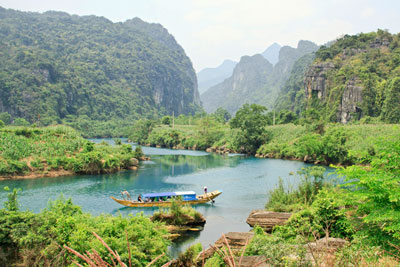The Vietnam People’s Army had decided to build a secret road system to carry war supplies to the south. The network, initially coded 559, eventually became known as the Ho Chi Minh Trail. It was on one of Ho’s birthdays, May 9, 1959, that the trail’s construction began with the establishment of Military Transport Division 559, comprising 440 young men and women. Over the next 16 years the trail carried more than one million North Vietnamese soldiers and vast quantities of supplies to battlefields in South Vietnam — despite ferocious American air strikes.
Ho Chi Minh Trail, elaborate system of mountain and jungle paths and trails used by North Vietnam to infiltrate troops and supplies into South Vietnam, Cambodia, and Laos during the Vietnam War. The trail was put into operation beginning in 1959, after the North Vietnamese leadership decided to use revolutionary warfare to reunify South with North Vietnam. Accordingly, work was undertaken to connect a series of old trails leading from the panhandle of North Vietnam southward along the upper slopes of the Annamese Cordillera (French: Chaîne Annamitique; Vietnamese: Truong-Son) into eastern Laos and Cambodia and thence into South Vietnam. Starting south of Hanoi in North Vietnam, the main trail veered southwestward to enter Laos, with periodic side branches or exits running east into South Vietnam. The main trail continued southward into eastern Cambodia and then emptied into South Vietnam at points west of Da Lat.
The network of trails and volume of traffic expanded significantly beginning in the 1960s, but it still took more than one month’s march to travel from North to South Vietnam using it. Traffic on the trail was little affected by repeated American bombing raids. Efforts were gradually made to improve the trail, which by the late 1960s could accommodate heavy trucks in some sections and was supplying the needs of several hundred thousand regular North Vietnamese troops active in South Vietnam. By 1974, the trail was a well-marked series of jungle roads (some of them paved) and underground support facilities such as hospitals, fuel-storage tanks, and weapons and supply caches. The Ho Chi Minh Trail was the major supply route for the North Vietnamese forces that successfully invaded and overran South Vietnam in 1975.



